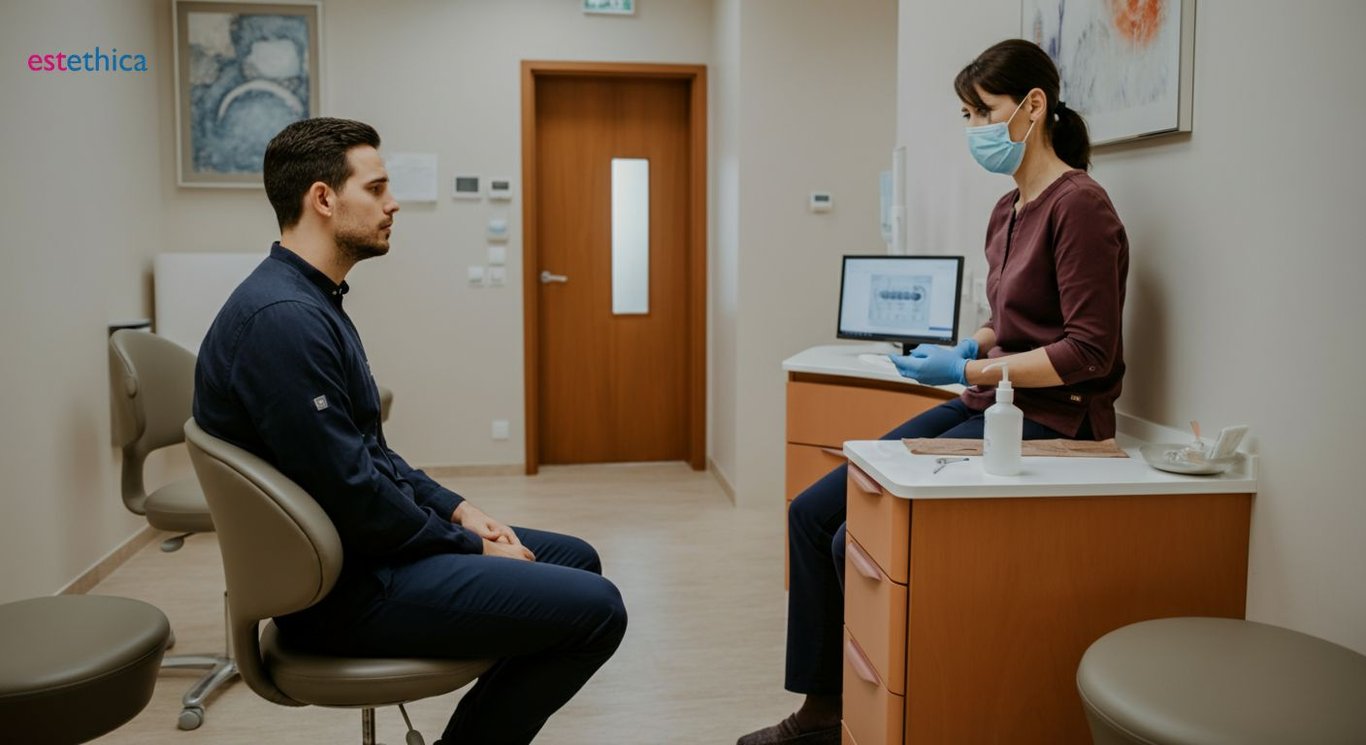Understanding Root Canal Treatment: Essential Insights for Patients
Discover how to make your root canal treatment comfortable, informed, and effective.
Root canal treatment is a dental procedure designed to treat infection at the center of a tooth. It involves the removal of the damaged or infected pulp, cleaning and reshaping of the canal, and sealing it to prevent further infection. This procedure can save a tooth that would otherwise need to be extracted, restoring its function and appearance. Root canal treatments have evolved significantly over the years, reducing discomfort and increasing success rates. This guide aims to educate you on what to expect during your root canal procedure, identify signs that indicate you need one, explore cutting-edge techniques in endodontic therapy, and discuss various painless options available for a comfortable experience. Whether you're preparing for a procedure or just curious, understanding root canal treatment will empower you to make informed decisions about your dental health.
What to Expect During Your Root Canal Procedure
Understanding the Root Canal Process
The root canal process is a crucial dental procedure aimed at saving a tooth that has been severely infected or damaged. Understanding the steps involved can help alleviate any anxiety you might have about the procedure. The process begins with a thorough examination, where your dentist or endodontist uses X-rays to assess the tooth's condition. This initial step ensures that the treatment plan is tailored to your specific needs.
- Examination and Diagnosis: The dentist evaluates the tooth using X-rays to determine the extent of the infection.
- Anesthesia and Preparation: Local anesthesia is administered to numb the area, and a protective sheet is placed around the tooth.
- Cleaning and Sealing: The infected pulp is removed, the canals are cleaned and shaped, and then filled with gutta-percha.
These steps are designed to ensure the tooth is thoroughly cleaned and sealed to prevent future infections. The use of advanced tools and techniques, such as digital imaging and rotary instruments, enhances the precision and efficiency of the procedure.
Post-Procedure Care and Recovery
After the root canal treatment, proper care is essential for a smooth recovery. Although you might experience mild discomfort, it is typically manageable with over-the-counter pain relievers. The healing process is generally quick, with most patients returning to normal activities within a few days.
- Follow-up Appointments: Regular check-ups ensure the tooth is healing properly and the infection is fully resolved.
- Temporary Filling: A temporary filling may be used until a permanent crown is placed to protect the tooth.
- Oral Hygiene: Maintaining good oral hygiene practices is crucial to prevent future dental issues.
By understanding the root canal process and the necessary post-procedure care, you can approach the treatment with confidence, knowing it plays a vital role in preserving your oral health.

Identifying the Signs You Need a Root Canal
Common Symptoms Indicating a Root Canal is Needed
Recognizing the signs that you may need a root canal is crucial for preserving your dental health. Persistent pain, especially when chewing or applying pressure, is a common indicator. This pain might start as an occasional twinge but can evolve into something more constant and severe without treatment.
- Persistent pain when chewing or applying pressure.
- Sensitivity to hot or cold temperatures that lingers.
- Swelling and tenderness in the surrounding gums.
These symptoms suggest that the nerves inside the tooth might be damaged or infected. Addressing these signs promptly by consulting with a dentist or endodontist can prevent more severe complications and potential tooth loss.
Uncommon Indicators of a Root Canal Requirement
Beyond the common symptoms, there are less obvious signs that might indicate the need for a root canal. A recurring or lingering pimple on the gums often signals an abscess that requires immediate attention. Additionally, cracked or chipped teeth due to trauma or previous decay can expose nerves, leading to nerve pain and the necessity for a root canal.
- Recurring pimple on the gums indicating an abscess.
- Darkening of the tooth suggesting pulp infection.
- Cracked or chipped teeth exposing nerves.
Early intervention often means simpler treatment and a better outcome. Paying attention to these warning signals can help preserve your smile and ensure long-term dental health.

Exploring the Latest Techniques in Endodontic Therapy
Innovative Technologies in Root Canal Treatment
The field of endodontics is rapidly evolving, with new technologies enhancing the effectiveness and comfort of root canal treatments. One such advancement is the integration of 3D imaging technology, which allows for precise mapping of root canals. This technology ensures comprehensive cleaning and minimizes the risk of missing small canal branches, which could lead to future complications.
- 3D Imaging: Provides detailed maps of root canals for thorough cleaning.
- Laser-Assisted Therapy: Uses concentrated light energy for efficient disinfection.
- Rotary Endodontic Tools: Flexible tools that reach difficult areas with ease.
Laser-assisted root canal therapy is another breakthrough, offering a minimally invasive method for disinfecting the root canal system. This technique not only accelerates healing but also reduces infection risks by using concentrated light energy for effective cleaning.
Enhancing Patient Comfort and Treatment Outcomes
Modern endodontic tools, such as rotary instruments made from flexible nickel-titanium, have revolutionized root canal procedures. These tools allow endodontists to access hard-to-reach areas within the tooth more easily, reducing patient discomfort. Additionally, electronic apex locators enhance the precision of these procedures by accurately determining root length, leading to improved treatment outcomes.
- Tool Flexibility: Nickel-titanium instruments adapt to complex canal shapes.
- Precision Measurement: Apex locators ensure accurate root length determination.
- Improved Outcomes: Enhanced precision leads to successful treatments.
These technological advancements mark an exciting era in endodontic therapy, where continuous innovation leads to safer, more comfortable, and successful procedures. Patients seeking the latest root canal techniques can benefit from understanding these developments, ensuring they select clinics that utilize modern practices.

Painless Options: Making Root Canal Treatment Comfortable
Advanced Techniques for a Pain-Free Experience
Root canal treatment, often dreaded for its perceived pain, has evolved significantly to become a more comfortable experience. Modern dentistry employs advanced techniques to ensure minimal discomfort during the procedure. Local anesthesia remains a cornerstone, effectively numbing the area to prevent pain. Additionally, sedation options like nitrous oxide or conscious sedation are available, particularly beneficial for patients with dental anxiety.
- Local Anesthesia: Ensures the procedure is pain-free by numbing the affected area.
- Sedation Options: Helps anxious patients relax, making the experience more pleasant.
- Digital Radiography: Provides precise imaging, reducing the need for prolonged procedures.
Technological advancements, such as digital radiography, enhance the precision of root canal treatments, allowing for quicker and more efficient procedures. These innovations contribute significantly to reducing the time spent in the dental chair, further minimizing discomfort.
Post-Procedure Comfort and Recovery
Post-procedure care is crucial for a smooth recovery after a root canal. While some discomfort is normal, it is typically mild and manageable with over-the-counter pain relief. Dentists often recommend specific medications to alleviate any lingering pain, ensuring a swift return to normal activities.
- Pain Management: Use of recommended pain relievers to ease discomfort.
- Minimally Invasive Techniques: Techniques like laser dentistry reduce tissue trauma.
- Quick Recovery: Most patients resume normal activities within a few days.
Minimally invasive techniques, such as laser dentistry, play a pivotal role in reducing tissue trauma, leading to faster recovery times. By choosing a dentist who prioritizes patient comfort and employs the latest technologies, you can ensure a more pleasant root canal experience.
Innovative Technologies in Root Canal Treatment
Painless Options: Making Root Canal Treatment Comfortable
Frequently Asked Questions
What is a root canal, and why is it necessary?
How long does a root canal treatment take?
Is root canal treatment painful?
What are the signs you need a root canal?
What should I expect during the recovery period after a root canal?
Discover the path to 'Healthy Beauty' with estethica's expert care. Call now for your free consultation and take the first step towards a more confident you!
📞 Call for Your Free Consultation